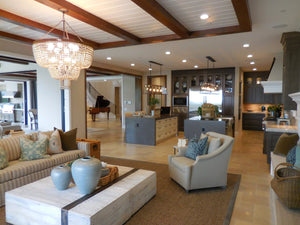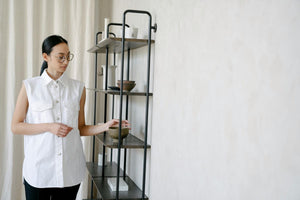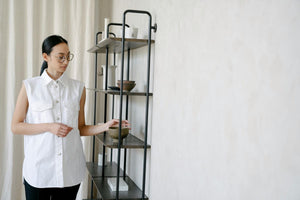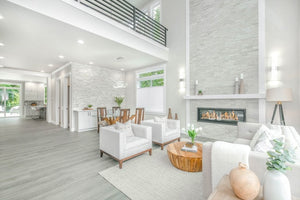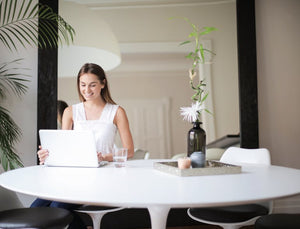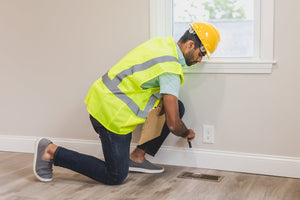Invisible Staging: Designing Spaces That Sell Without Buyers Realizing They’ve Been Staged

Invisible Staging: Designing Spaces That Sell Without Buyers Realizing They’ve Been Staged. Invisible staging is the art of preparing a home so buyers feel an instant connection without sensing it has been staged. It focuses on comfort, warmth, and authenticity, creating an environment that feels real and lived-in. Instead of obvious props, each detail supports a natural flow and appeal. Buyers explore the space without distraction, noticing its best features. This subtle approach builds trust and helps homes sell faster, often at higher prices, without heavy-handed presentation.
Understand the Buyer’s Mindset
Buyers often respond more to how a home makes them feel than to its exact features. They want spaces that feel authentic, not staged for effect. This means avoiding overly styled rooms and instead focusing on comfort and subtle charm.
For sellers, this shift in perspective can also help you detach before a move, making it easier to present the property objectively. When buyers walk in, they should imagine themselves living there, without distractions that signal a “for sale” setup. A natural, welcoming environment draws them in and keeps their attention.
Create a Neutral but Inviting Color Palette
Color influences mood instantly, shaping how buyers experience a space. A neutral but inviting color palette works for most tastes and styles. Soft whites, gentle grays, and warm beiges create a fresh base. These tones make rooms feel larger and brighter. To avoid a bland look, add subtle pops of color through cushions, rugs, or wall art.
In invisible staging, the goal is balance—neutral backdrops with touches that feel natural, not forced. This approach allows buyers to focus on the home’s features while still enjoying a space that feels warm, personal, and easy to imagine as their own.

Pack Away Excess Items and Declutter Without Sterility
Clutter can overwhelm buyers and make spaces feel smaller. Start by removing personal photos, bulky furniture, and anything that distracts from the home’s features. Store items neatly in boxes or off-site to maintain open, breathable rooms. While doing this, you can pack delicate items with confidence to protect them during the process.
Avoid stripping spaces bare, as this can create a cold, uninviting atmosphere. Instead, leave a few neutral accessories to suggest comfort. Balanced decluttering highlights the home’s potential while still offering warmth, helping buyers see its functionality without being influenced by the seller’s personal style or clutter.
Use Furniture for Flow, Not Just Looks
Furniture should guide buyers through a home naturally. Arrange pieces to create clear walkways and open sightlines. Avoid blocking doors, windows, or architectural features. Keep furniture proportional to the room size to prevent overcrowding or empty gaps. In small spaces, choose multi-functional pieces that add utility without clutter.
Larger rooms benefit from defined zones, such as a reading nook or conversational seating. The aim in invisible staging is not just style, but movement—buyers should move easily from one space to another. This flow helps them appreciate the home’s layout while imagining how their own furniture and lifestyle might fit seamlessly.
Incorporate Lifestyle Cues Without Overdoing It
Small lifestyle touches help buyers connect emotionally with a space. A coffee cup beside an open book or fresh towels in the bathroom can spark imagination. Choose details that feel natural rather than staged, such as a throw casually draped on a chair.
These moments should suggest comfort and ease. You can make your home look lived-in while still keeping it market-ready. Avoid clutter or personal items that distract. Instead, use hints of daily life to make the space relatable. Buyers often respond more to these subtle cues than to perfect, impersonal displays.

Light That Feels Natural All Day
Lighting shapes how buyers perceive a home from the moment they enter. Maximize natural light by keeping curtains sheer and windows clean. In darker areas, add warm-toned bulbs for a soft, welcoming glow. You can also use mirrors and lighting together to brighten spaces and create a sense of openness.
Layer lighting sources—overhead fixtures, table lamps, and accent lights—for flexibility throughout the day. Avoid harsh or overly dim light, as it can distort colors and mood. Balanced, well-placed lighting enhances both photographs and in-person showings, helping buyers feel comfortable and engaged in every room they explore.
Keep Scents Fresh but Faint
Scent can strongly influence how buyers feel in a home. Fresh, subtle aromas create a welcoming atmosphere without overwhelming the senses. Open windows briefly before showings to let in fresh air. Use lightly scented candles, fresh flowers, or mild essential oil diffusers for a gentle effect. Avoid strong air fresheners or heavy cooking smells, as they can be distracting or off-putting.
In invisible staging, scent should complement the visual presentation, not compete with it. A clean, faint fragrance makes the space feel cared for and comfortable, encouraging buyers to linger and imagine themselves living there.
Highlight the Home’s Best Features Naturally
Every home has standout elements that deserve attention, such as a fireplace, bay window, or built-in shelves. Arrange furniture and décor to subtly draw the eye to these areas. For example, place seating near a fireplace or frame a view with well-positioned curtains. Avoid props or arrangements that feel staged only for photos, as they can break the sense of authenticity.
The goal is to showcase features while keeping the setting natural and lived-in. Buyers should notice these highlights without feeling guided, allowing them to form genuine appreciation and envision using these spaces in their own way.

Invisible Staging in Open Houses and Private Showings
Open houses and private showings require maintaining a natural, inviting atmosphere. Ensure each room looks consistent with the photos buyers saw online. Refresh small details before visitors arrive—fluff cushions, adjust lighting, and tidy surfaces. Keep personal items hidden but leave a few neutral touches for warmth.
Even during events, the space should feel lived-in yet orderly. Avoid making it appear too perfect, as this can feel artificial. A relaxed, authentic presentation helps buyers explore freely, connect emotionally, and imagine themselves enjoying the home without feeling pressured by obvious staging cues.
The Subtle Power of Staging That Sells
Invisible staging works because it feels natural, welcoming, and genuine. By focusing on comfort, flow, and subtle detail, sellers build trust and spark emotional connection. This quiet approach helps homes sell faster and for more, while allowing buyers to imagine the space as truly their own.
- Home Staging Warehouse

